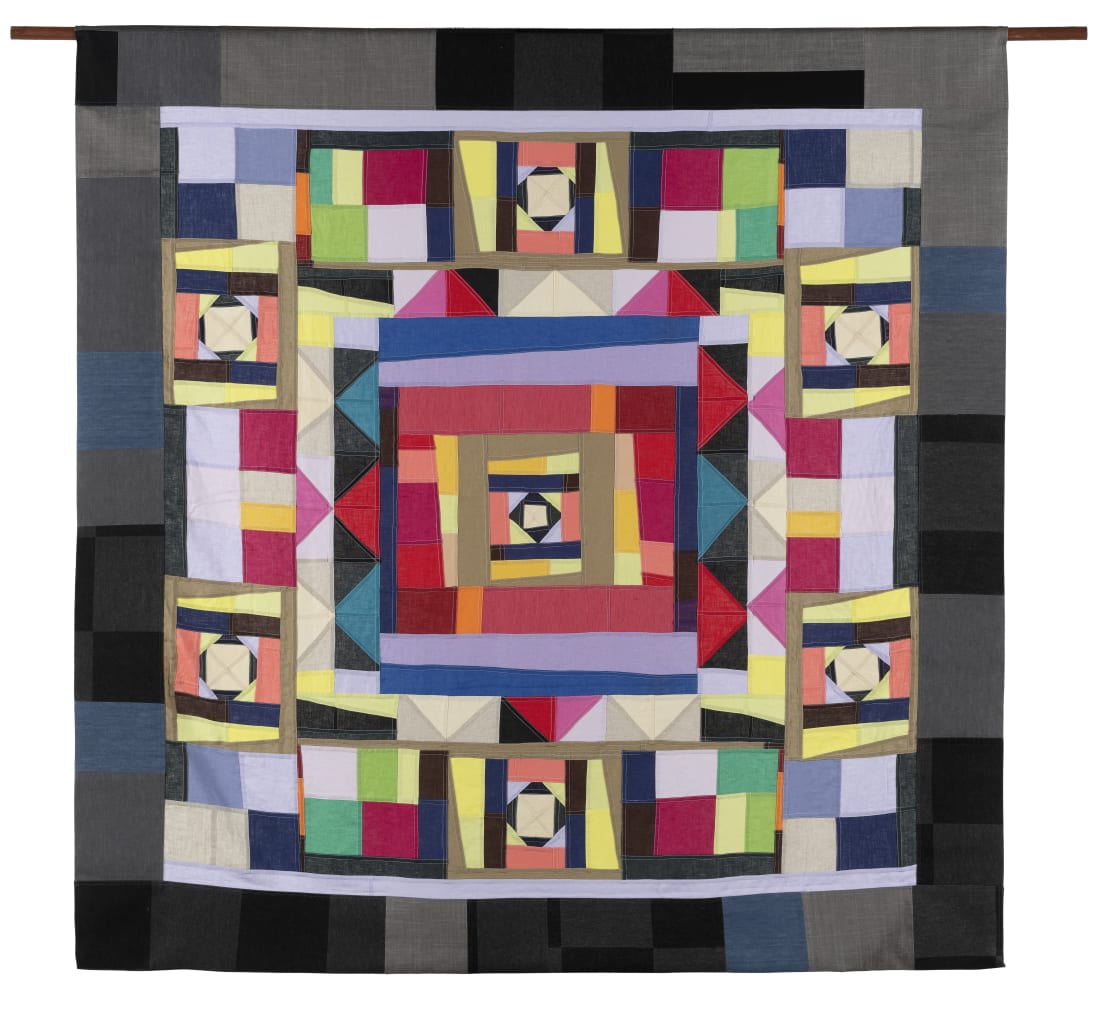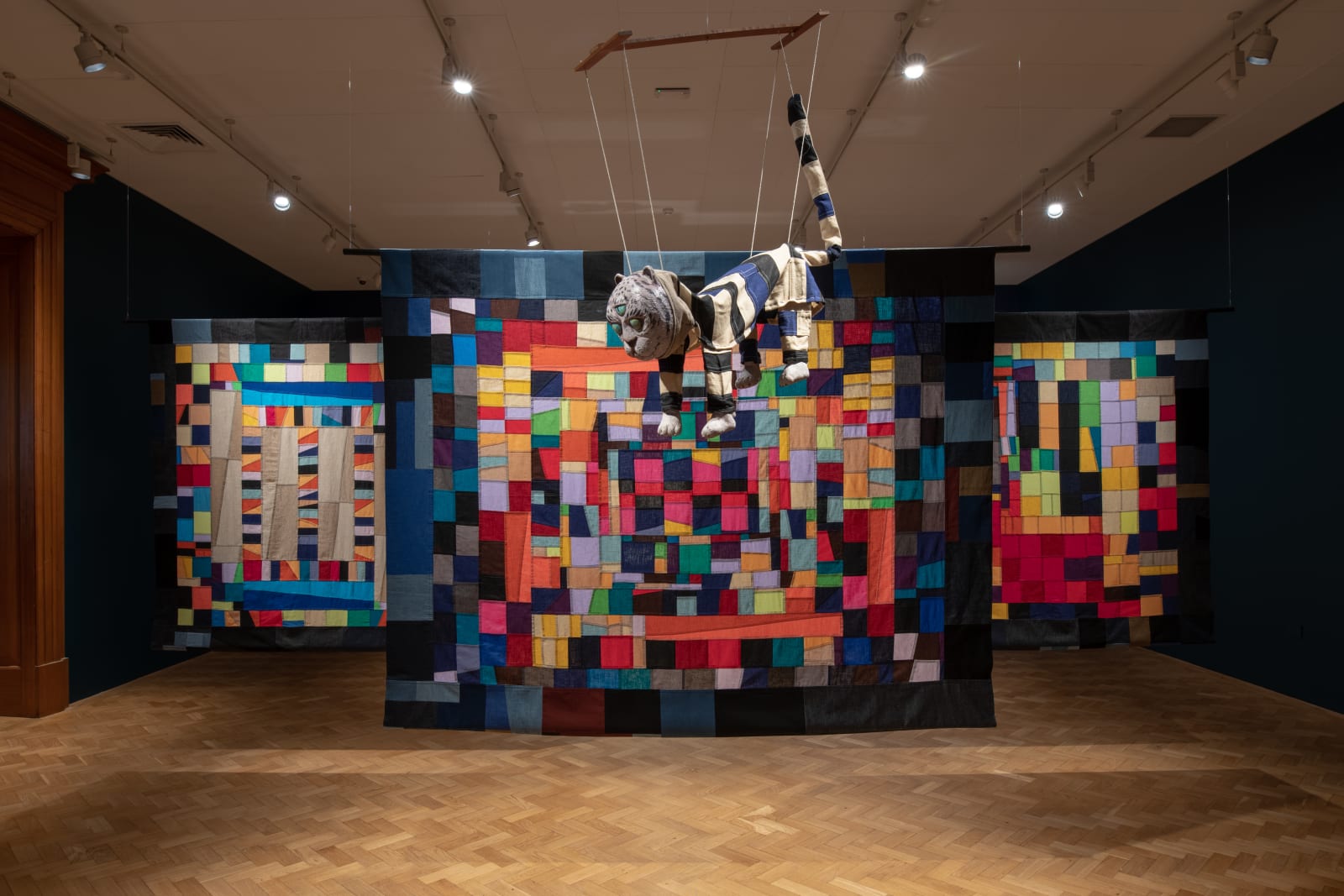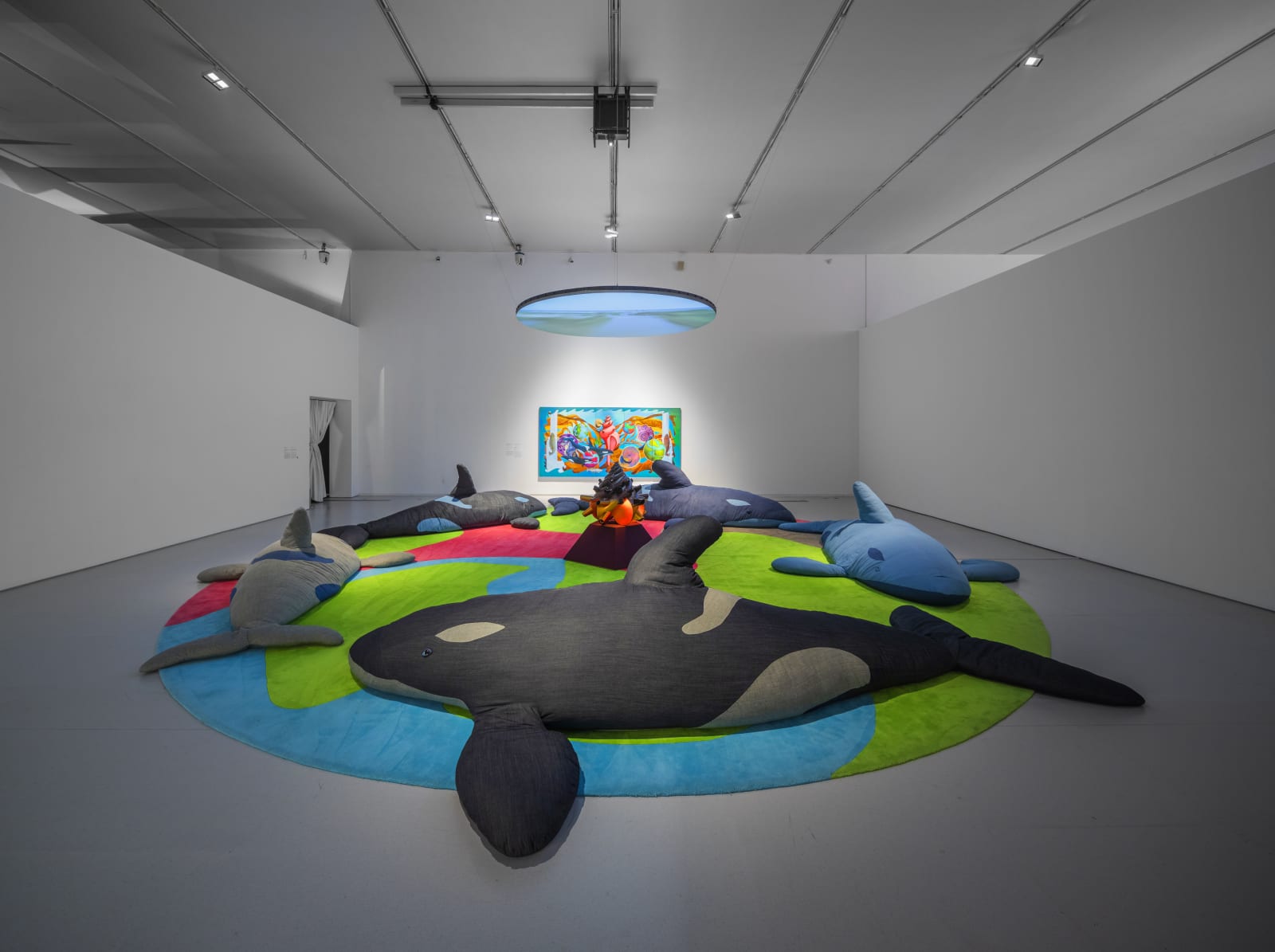

Zadie Xa
Overview
'My work is pushing back against that monolithic idea of what the centrepoint of culture is.'
Zadie Xa has developed an expansive practice that addresses the nature of diasporic identities, global histories, familial legacies and interspecies communication. She explores these themes through immersive installations that appeal to the sensory experience of the viewer, often incorporating painting, sculpture, textile, sound and performance elements. Born in Vancouver, Canada and now based in London, Xa draws upon her Korean heritage as she seeks to elevate narratives that have been erased or repressed by the West and occupying powers. For her, art offers a means to analyse socio-political conditions and cultural behaviours through a lens of masquerade, play, costuming and storytelling. Embracing a highly collaborative mode of working, she has developed ongoing exchanges with dancers and musicians, and has worked closely with the artist Benito Mayor Vallejo since 2006.
Cultivating a heavily research-based way of working, Xa takes inspiration from diverse global references: from the history of art and craft, to speculative fiction, pop culture, music and fashion. Korean folklore and mythology, in particular, offer rich visual and narrative traditions that inform her interdisciplinary practice, providing her projects with a ‘skeleton or backbone’ that, she explains, allows her to ‘create points of linking myself to other artists and a timeline in history.’ She highlights matrilineal and women-led practices within these traditions, such as Korean shamanism, to envisage new social arrangements and ways of relating to the natural world, positioning her work towards today’s pressing ecological questions. These varied references are reconceived through an autobiographical framework to establish a deeply personal mythology, epitomised by the motifs that recur across her paintings, costumes and sculptures; Xa’s Pekingese dog is reimagined as a haetae (a creature who passes moral judgement in Korean folklore), while shells collected by the artist on Jeju Island in South Korea are conceived as symbols of nomadic identity, understood as organic structures that previously housed the bodies of other creatures.
Over the years, diverse modes of textile production have become a central strand in Xa’s practice. Clothes and costumes are worn in performance and presented as standalone pieces. In turn, multicoloured patchwork frames referencing traditional Korean quilting techniques, such as bojagi, often surround her paintings. Inspired by traditional Korean garments and techniques, as well as the fashion trends familiar to the artist from her upbringing in Canada, the costumes materialise her exploration of diasporic identities by addressing the role of fashion in self-presentation. ‘Clothing allows you to change who you are,’ says Xa. ‘It mediates the person that you, on that particular day, wish to present to the world.’ When making the items of clothing, she thinks ‘about ideas of magic and shapeshifting, the idea of being a person in the diaspora, or anybody involved with identity politics: the idea of changing form, changing who you are.’
Zadie Xa trained at the prestigious Emily Carr Institute of Art + Design, earning a BFA in 2007, before receiving an MFA in Painting from the Royal College of Art, London in 2014. In 2022, the Whitechapel Gallery commissioned Xa’s largest solo exhibition to take place in London to date, House Gods, Animal Guides and Five Ways 2 Forgiveness (2022–23). Other solo exhibitions of the artist’s work have taken place at The Box, Plymouth (2022); Leeds Art Gallery (2021); Remai Modern, Saskatoon (2020); De La Warr Pavilion, Bexhill-on-Sea (2019); Tramway, Glasgow (2019); Yarat Contemporary Art Space, Baku (2019); Galeria Agustina Ferreyra, Mexico City (2018); Union Pacific, London (2018); and Pump House Gallery, London (2017).
In 2019, Xa was invited to contribute to the performance program curated by Ralph Rugoff with Aaron Cezar for the 58th Venice Biennale. Recent performances have since been staged by Xa at The National Gallery, London (2021; in collaboration with Benito Mayor Vallejo and curated by Priyesh Mistry), Art Gallery of Ontario, Toronto (2020), and Tramway, Glasgow (2019), with earlier performances taking place at the Southbank Centre (2018; commissioned by the Hayward Gallery), Palais de Tokyo, Paris (2018), and Serpentine Gallery, London (2016). Xa’s work has been featured in numerous international group exhibitions, including those at Copenhagen Contemporary, Denmark (2023); Institute of Contemporary Arts, Los Angeles (2022); Museo de Arte Contemporáneo de Roma (MACRO), Rome (2022); Haus der Kunst, Munich (2021); The Polygon Gallery, North Vancouver (2021); Arnolfini, Bristol (2019); and MoMA PS1 (2018). She participated in the Jeju Biennale in 2022 and the 13th Shanghai Biennale in 2021. Xa’s work is held in the collections of the Arts Council, British Council and CRC Foundation.




























































































































































































































